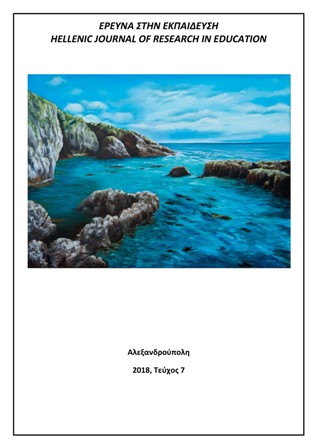Gender stereotypes and division in Music Education: The case of teaching of folk and traditional instruments in two provincial Music Schools

Abstract
The contribution of Music Secondary Schools to the field of folk and traditional can be judged as important, based on a large number of graduates who are currently active in the field. In addition, with the teaching of folk music in these schools, more and more women are entering a field that has always been male-dominated, with their role being limited in the past to that of singer. Interesting is the case of specific instruments that gradually seem to be chosen more by women, while other instruments have retained their "male" character. So far, there is a large amount of foreign literature on gender stereotypes in Music Education, and more specifically on the relationship between gender of students and their choice of instrument. The aim of this article is to study similar stereotypes about folk and traditional instruments based on ethnographic material collected in two provincial Music Schools. For this purpose, the author suggests a theoretical model, which attributes an evaluative and certainly not neutral character to gender, which legitimizes and reinforces existing hierarchies. Τhus, any music activity performed by women automatically acquires low status, and conversely, men avoid low status activities which are considered as less masculine.
Article Details
- How to Cite
-
Βερβέρης Α. (2018). Gender stereotypes and division in Music Education: The case of teaching of folk and traditional instruments in two provincial Music Schools. Hellenic Journal of Research in Education, 7(1), 109–120. https://doi.org/10.12681/hjre.18717
- Issue
- Vol. 7 No. 1 (2018)
- Section
- Articles

This work is licensed under a Creative Commons Attribution-NonCommercial-ShareAlike 4.0 International License.
Authors who publish with this journal agree to the following terms:
- Authors retain copyright and grant the journal right of first publication with the work simultaneously licensed under a CC-BY-NC-SA that allows others to share the work with an acknowledgement of the work's authorship and initial publication in this journal.
- Authors are able to enter into separate, additional contractual arrangements for the non-exclusive distribution of the journal's published version of the work (e.g. post it to an institutional repository or publish it in a book), with an acknowledgement of its initial publication in this journal.
- Authors are permitted and encouraged to post their work online (preferably in institutional repositories or on their website) prior to and during the submission process, as it can lead to productive exchanges, as well as earlier and greater citation of published work (See The Effect of Open Access).


